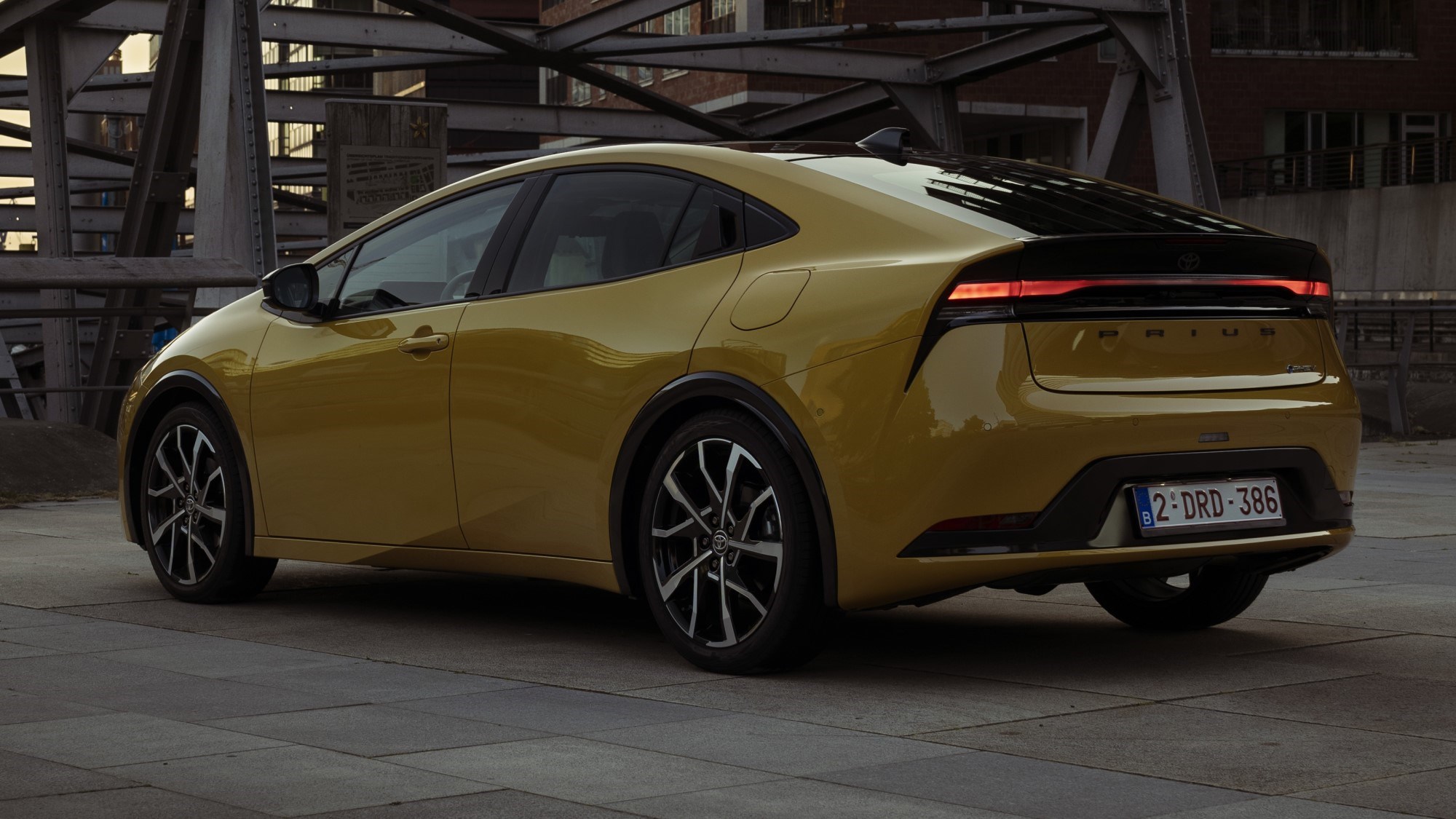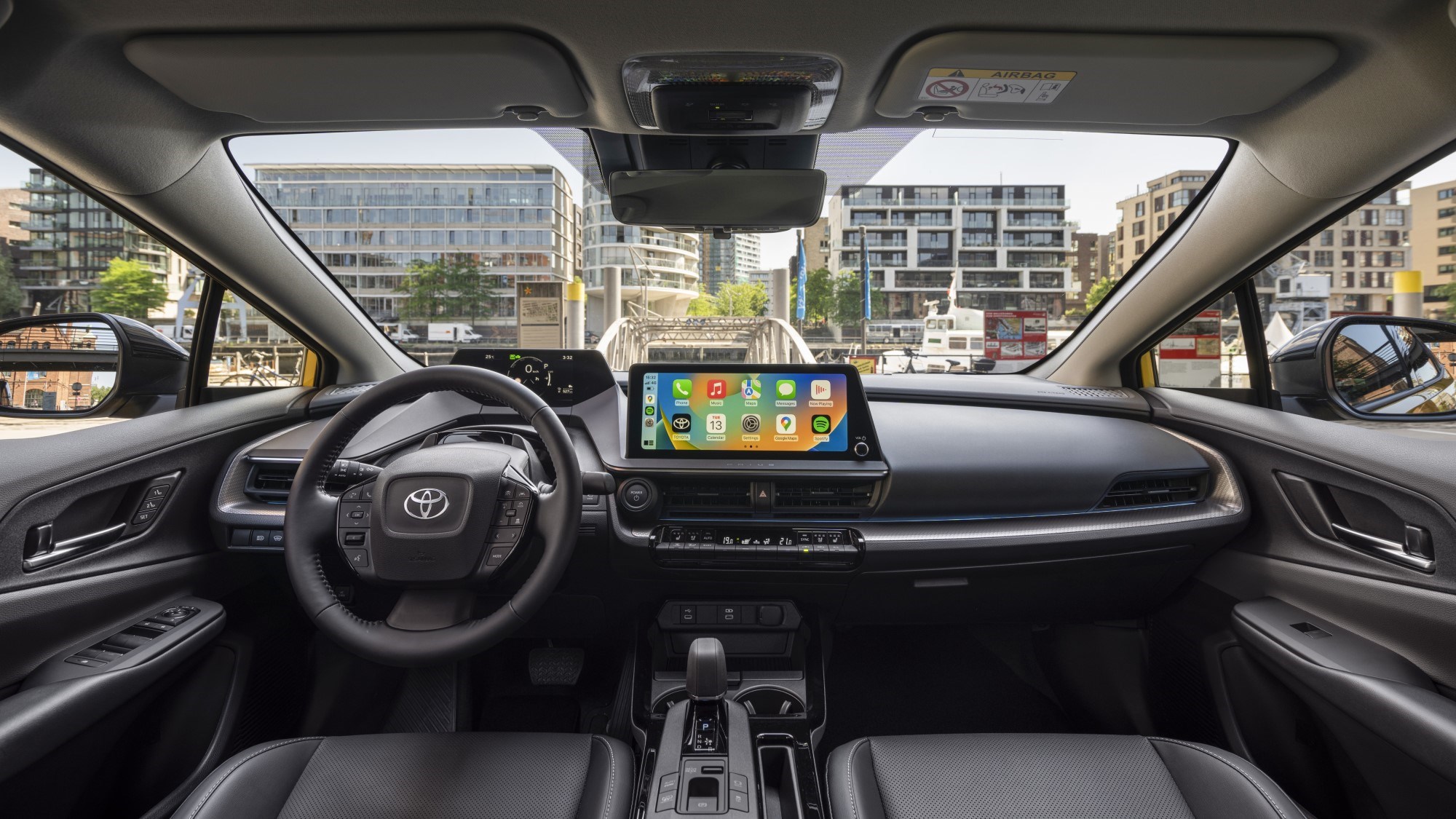► Toyota Prius now plug-in hybrid only
► Dramatic new look, punchier performance
► Now confirmed for UK sale in 2024
You may recall the new Toyota Prius Plug-in Hybrid wasn’t originally destined for these shores. Well, Toyota UK has had a change of heart, deciding to offer the fastest, funkiest, and most desirable Prius in the UK after all to do battle with the best hybrid cars.
By pushing the peak of the roof towards the rear of the car and lowering it significantly, a far more athletic shape has been created. Large 19-inch wheels and a stretched wheelbase complete the look, distancing it from the Uber fodder we’re familiar with.
Whether that’ll be enough to build on the dismal sales of the old car – just 563 were sold in 2022 – remains to be seen.
What’s new
Pretty much everything. Once again, the Prius is a pioneer for Toyota, being the first car to use the a variety of bits and pieces that’ll slot into other models. That includes the CH-R SUV driven elsewhere on this site, next Corolla and plenty more.

Underpinning the Toyota Prius is the second-gen Toyota New Global Architecture (TNGA), in this case the fresh GA-C platform. It’s stiffer and lighter than the old car’s bodyshell, while the fuel tank and hybrid battery have been moved to lower the centre of gravity.
The Prius benefits from Toyota’s third generation plug-in hybrid system. There’s a higher capacity battery that not only boosts the electric driving range, it also allows more energy to be harvested by the regenerative brakes. If that wasn’t enough, there’s also a new 2.0-litre petrol engine with more power and greater efficiency.
What are the specs?
The headline here is that overall power is up by an eyebrow raising 99bhp, for a total system output of 220bhp. This drops the 0-62mph time to a sprightly 6.8-seconds, yet it’s still good for just 11g/km of CO2 and 564.9mpg on the WLTP test cycle.
That new battery is up to 13.6kWh in capacity yet is smaller than the old car’s lower capacity pack. After a rather sluggish four-hour recharge thanks to a slow 3.3kW maximum charge rate, it’ll do up to 53 miles of electric-only running.
How does the Toyota Prius Plug-in drive?
If you’re expecting instant EV-style acceleration, you might be slightly disappointed. Instead, there’s a slow build to the acceleration that means wheelspin is unlikely to be an issue. Once the engine’s wound itself up to peak power the Prius is pleasingly brisk and a far cry from its predecessor’s near ten second 0-62mph time.
The new chassis is more than up to the task, with direct, precise steering that makes stringing together a few corners a far more pleasant experience. Just don’t expect much feel through the steering wheel’s rim.

There isn’t much lean even when you’re exploring the generous grip levels, so a B road blast isn’t the pointless exercise you might expect. It’s unlikely you’ll be whooping with delight, but the new found agility and cross-country pace makes it reasonably entertaining.
It even sounds less annoying than before. In most situations the engine’s note will still be rising slightly by the time you’ve finished accelerating, and it sounds a little rortier than before. Hitting motorway speeds from a standstill as quickly as possible will get the engine holding revs unnaturally as before, but we can live with that.
Bigger 19-inch wheels and a more handling oriented setup does mean it’s firmer than before, if not uncomfortably so. Whether the Prius is as liveable on the UK’s patchwork road network is something we’ll find out when the first UK deliveries start in 2024.
What about the interior?
With the price jumping to beyond £40,000, it’s good to see interior quality has been improved for the new Toyota Prius. There’s a good mix of soft-touch materials in the places you’ll touch regularly, interestingly textured hard plastics where you look regularly, and only the lower reaches of the cabin gets the black scratchy elephant skin.
Most functions are taken care of by a large, responsive and sharp touchscreen infotainment system, although we’re pleased to see physical controls on the dash and steering wheel. A big digital display is perched high on the dash in Peugeot iCockpit style for speed, hybrid info and everything else a driver might want. It’s sharp and easy to control via the steering wheel while its positioning keeps your eyes closer to the road.

Space up front is unlikely to be an issue, partially because you’re sat so much lower than before. Legroom in the back is fine for a car of this size, with the roofline predictably limiting rear headroom. If Toyota wanted to put minicabbers off, they’ve succeeded.
Before you buy: trims and rivals
Three trim levels, Base, Executive and Advanced are offered in Europe, with just the one powertrain. Prices range from around €45,000 to €52,000 in Germany, although at the time of writing UK trims and prices were yet to be confirmed.
Verdict: Toyota Prius Plug-in Hybrid
While a Prius has often been a welcome sight, for once it’s not just when your Uber turns up on a rainy night. The latest plug-in isn’t as practical as its predecessor, but we’re happy to trade a bit of space for some genuine desirability.
It looks great inside and out, is good to drive, devilishly efficient and even reasonably quick. Even with a new CH-R on the way as well, we’d be shocked if Toyota didn’t sell an awful lot more than 563 in 2024.